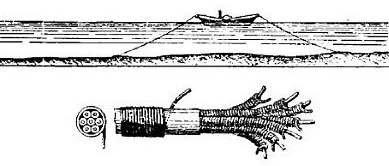SHOUTY CAPS!!!

Over at Meh Glenn Fleishman has put together a fascinating two-parter on the history of using ALL CAPS for emphasis. And SHOUTING.

Over at Meh Glenn Fleishman has put together a fascinating two-parter on the history of using ALL CAPS for emphasis. And SHOUTING.
The history of long distance communication is a fascinating, and huge, subject. I’m going to focus just on the history of network email – otherwise I’m going to get distracted by AUTODIN and semaphore and facsimile and all sorts of other telegraphy.
Electronic messaging between users on the same timesharing computer was developed fairly soon after time-sharing computer systems were available, beginning around 1965 – including both instant messaging and mail. I’m interested in network mail, though, so we need to skip forward a few years.
You need a network. And a community.
Around 1968 the initial plans for “ARPANET”, a network to link the various ARPA-funded computers together were underway. Local mail between users on the same system was already a significant part of the nascent community.
The Mary Litynski Award is presented by M3AAWG to people who have done extensive work outside the public eye over a significant period of time. At the Dublin conference the award was presented to Rodney Joffe. A lot of other people will talk about Rodney’s accomplishments, including his role in the founding of Genuity, his work with the DMA in the early days of spam, his efforts against SMS spam and his efforts to secure the Internet infrastructure. But I have a much more personal perspective.
Rodney was seminal in changing my life and career path. Back in 1999, Rodney asked Steve to look into some DNS creativity he was testing. A few months later, Rodney invited Steve to join a new company he was founding based on that DNS creativity. We moved out the the Bay area and Steve started working for UltraDNS in early 2000.
Moving out to the Bay Area triggered my career shift into anti-spam and anti-abuse. I started working at MAPS (now Trend Micro) in their experimental consulting service division. We were the “carrot” end of the equation, where our job was to help companies minimize the abuse coming out of their networks.
After MAPS went through a round of layoffs in 2001, Rodney started recommending me as an email consultant to some of his connections in the marketing world. This work was a success and directly led to the founding of Word to the Wise and everything that flows from that.
M3AAWG has published a video where Rodney discusses his role in the history of spam and some of the other things he’s done to fight junk advertising (both fax and SMS spam). He sued junk faxers in small claims court. He was instrumental in getting SMS spam covered under the TCPA. He wrote the first global opt-out list supported by both the DMA and the ISPs and proved that global opt-out would never work. He literally pulled the plug on spamming customers.
Rodney says he’s “Not smart, just the guy who carries the bags of money and helps the smart people get things done.” I certainly don’t believe that is true. He has done things on the global scale to make the Internet a safer place for end users. But my appreciation is much more personal. I will forever be grateful to him for starting us on this path and the help and advice he gave us so many years ago.
Thirty years ago this Sunday, symbolics.com was registered – the first .com domain. It was followed, within a few months, by bbn.com, think.com, mcc.com and dec.com.
Symbolics made lisp machines – symbolics.com is now owned by a domain speculator.
BBN is a technology R&D company who’ve worked on everything. If I had to pick one thing they were involved with it’d be the Internet Message Processor – the router used on the very first Internet nodes. They are still around, as a division of Raytheon.
Think.com made some amazing massively parallel computers. Their hardware group was bought out by Sun, who were bought out by Oracle and think.com now redirects to a broken error page at oracle.com.
Mcc.com were the first – and for a while, the largest – computing research and development consortium in the US. They did groundbreaking work on everything from silicon to AI. Their domain is now a generic parked page owned by a domain speculator.
Dec.com were Digital Equipment Corporation – creators of the PDP, VAX, Alpha and StrongARM processors, amongst many other things. They were a huge company when I worked for them designing Alpha CPUs in the mid 90s, then they were acquired by Compaq, then HP, then split up. Their domain is now a personal website.
It took nearly three years to reach 100 registered .com domains and nearly 10 years to reach 9,000.
As of this morning there are 116,621,517 domains registered in .com, from (64 zeros).com to (64 letter z).com, out of a possible total of more than two googol – so there’s still a domain there for you.
221,848 of those domains in .com mention “mail”.